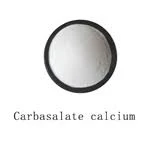- Afrikaans
- Albanian
- Amharic
- Arabic
- Armenian
- Azerbaijani
- Basque
- Belarusian
- Bengali
- Bosnian
- Bulgarian
- Catalan
- Cebuano
- Corsican
- Croatian
- Czech
- Danish
- Dutch
- English
- Esperanto
- Estonian
- Finnish
- French
- Frisian
- Galician
- Georgian
- German
- Greek
- Gujarati
- Haitian Creole
- hausa
- hawaiian
- Hebrew
- Hindi
- Miao
- Hungarian
- Icelandic
- igbo
- Indonesian
- irish
- Italian
- Japanese
- Javanese
- Kannada
- kazakh
- Khmer
- Rwandese
- Korean
- Kurdish
- Kyrgyz
- Lao
- Latin
- Latvian
- Lithuanian
- Luxembourgish
- Macedonian
- Malgashi
- Malay
- Malayalam
- Maltese
- Maori
- Marathi
- Mongolian
- Myanmar
- Nepali
- Norwegian
- Norwegian
- Occitan
- Pashto
- Persian
- Polish
- Portuguese
- Punjabi
- Romanian
- Russian
- Samoan
- Scottish Gaelic
- Serbian
- Sesotho
- Shona
- Sindhi
- Sinhala
- Slovak
- Slovenian
- Somali
- Spanish
- Sundanese
- Swahili
- Swedish
- Tagalog
- Tajik
- Tamil
- Tatar
- Telugu
- Thai
- Turkish
- Turkmen
- Ukrainian
- Urdu
- Uighur
- Uzbek
- Vietnamese
- Welsh
- Bantu
- Yiddish
- Yoruba
- Zulu
Dec . 11, 2024 01:25 Back to list
Antiparasitic Treatments for Human Health and Wellness
Antiparasitic Treatments for Humans A Comprehensive Overview
Parasitic infections pose a significant threat to human health, particularly in tropical and subtropical regions. With millions affected worldwide, the need for effective antiparasitic treatments has never been more critical. This article explores the various types of parasitic infections, the medications available for their treatment, and ongoing research aimed at enhancing efficacy and safety.
Understanding Parasitic Infections
Parasites are organisms that live on or inside a host, deriving nutrients at the host's expense. They can be classified into three main categories protozoa, helminths, and ectoparasites. Protozoa are single-celled organisms, such as Plasmodium (which causes malaria) and Giardia (which causes giardiasis). Helminths are larger, multicellular organisms, including tapeworms, roundworms, and flukes. Ectoparasites, such as lice and mites, live on the skin's surface.
The transmission routes of parasitic infections vary widely, encompassing contaminated food and water, insect bites, and direct contact with infected organisms. Symptoms can range from mild discomfort to severe illness, highlighting the need for prompt diagnosis and treatment.
Available Antiparasitic Medications
The treatment of parasitic infections often involves the use of antiparasitic drugs, which target specific parasites in the body
. Several classes of medications exist, each with unique mechanisms of action1. Antiprotozoal Agents Drugs like metronidazole and tinidazole are effective against various protozoan infections. For malaria, chloroquine and artemisinin-based combination therapies are widely used to eradicate the Plasmodium species from the bloodstream.
2. Anthelmintics Medications such as albendazole and mebendazole are used to treat helminth infections by either paralyzing the worms or starving them. Ivermectin is another powerful agent effective against several parasitic infections, including strongyloidiasis and onchocerciasis.
antiparasitic for humans

3. Ectoparasiticides Treatments for ectoparasite infections often involve topical or oral medications. Permethrin is commonly used to treat lice and scabies, effectively killing the parasites upon contact.
While these medications have proven effective, challenges such as drug resistance and side effects necessitate ongoing research into new treatments and better management strategies.
Research and Development
Research into antiparasitic medications is thriving, driven by the urgent need for improved therapies. Scientists are exploring novel compounds, including natural products derived from plants and microorganisms that may offer promising antiparasitic activity.
Additionally, combination therapies are being investigated to enhance treatment efficacy and reduce the likelihood of resistance developing. By targeting multiple pathways within the parasite’s life cycle, these combinations hold the potential to lower treatment duration and improve patient outcomes.
Moreover, advancements in drug delivery systems, such as nanoparticles and slow-release formulations, are also being studied. These novel strategies aim to improve the bioavailability of existing drugs, ensuring that higher concentrations reach the target sites within the human body.
Conclusion
Parasitic infections remain a critical public health challenge, necessitating continued focus on effective treatment options. Antiparasitic medications have come a long way, providing relief to millions of infected individuals. However, as resistance develops and new parasites emerge, the field must adapt and innovate.
The future of antiparasitic treatment looks promising, with ongoing research and collaboration among scientists, healthcare professionals, and policymakers. By prioritizing research and development, we can hope to combat these insidious infections more effectively, safeguarding the health of populations worldwide. Continuous education and awareness about parasitic diseases will also empower individuals to take preventive measures, thus reducing the burden of these infections in society.
-
Guide to Oxytetracycline Injection
NewsMar.27,2025
-
Guide to Colistin Sulphate
NewsMar.27,2025
-
Gentamicin Sulfate: Uses, Price, And Key Information
NewsMar.27,2025
-
Enrofloxacin Injection: Uses, Price, And Supplier Information
NewsMar.27,2025
-
Dexamethasone Sodium Phosphate Injection: Uses, Price, And Key Information
NewsMar.27,2025
-
Albendazole Tablet: Uses, Dosage, Cost, And Key Information
NewsMar.27,2025













